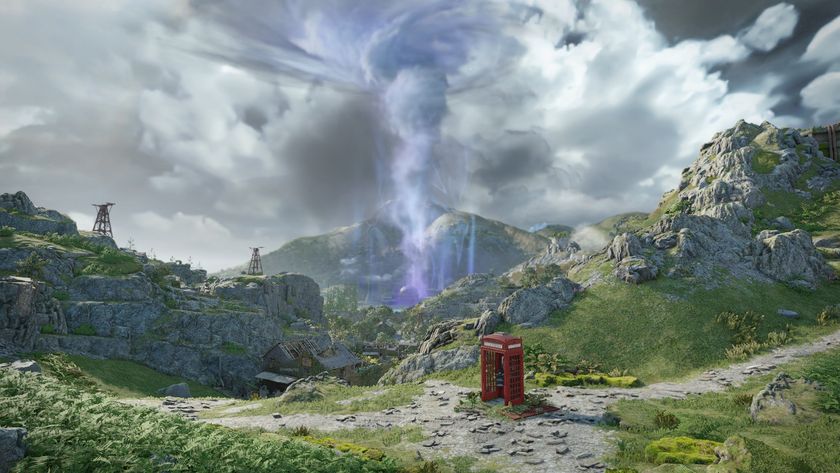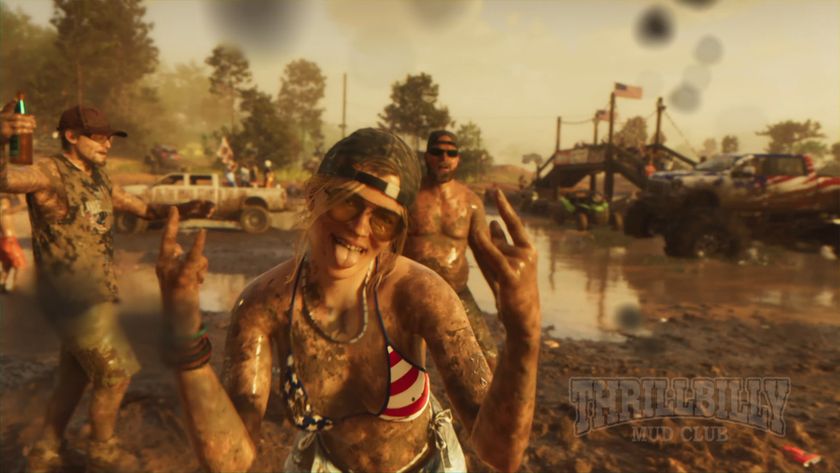Best Death Stranding plot theories analysed, from virtual reality, to parallel universes, and religious purgatory
Hideo Kojima is the master of drip-feeding clues without context, but what does the latest trailer mean for Death Stranding's bigger picture?
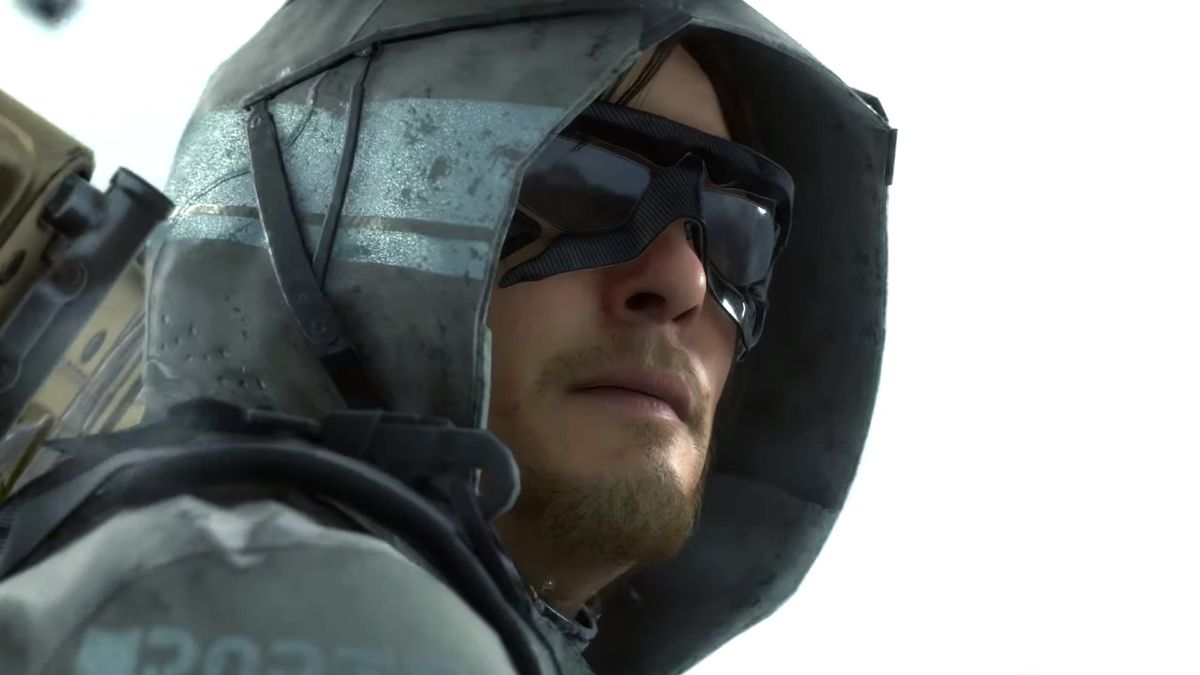
The latest trailer may have revealed new characters, gameplay mechanics, and even a Death Stranding release date of November 8, 2019, but with scarcely five months until launch, we’re still no closer to understanding what-in-Hades-is-going on. Sure, there are multiple versions of Mads Mikkelsen’s scientist-turned-soldier character Cliff, a mysterious Bridge Baby that allows travel to the ‘other side’, and a United Cities of America (UCA) plagued by void outs and environmental destruction; but there’s little sense of how it knits together. What causes the Death Stranding event? Why are parallel universes colliding? Why is Lindsay Wagner’s character both old and young, referred to as both Bridget and Amelie? Typically – and deliberately – there’s no easy answer, but the internet is awash with informed speculation and competing Death Stranding theories; which it’s possible to interrogate using evidence and a deeper understanding of Kojima’s motives and legacy. The Death Stranding plot theories have no end.
As Kojima’s acclaimed Metal Gear Solid series matured, each new game announcement verged on performance theatre. For example, Metal Gear Solid 5 was initially unveiled at The Game Awards as a mystery title called The Phantom Pain, developed by the unknown Moby Dick Studios and helmed by the bandaged studio head Joakim Mogren. What might to the uninformed eye look like nonsense, was a deliberate allusion to the game’s eventual themes of identity, legacy and revenge; shadowed by the reference to the novel Moby Dick and dangling one of the game’s biggest twists in plain sight. Metal Gear Solid 5, like Metal Gear Solid 4 before it, dared its fans to guess at the wider themes and plot using drip-fed trailer clues, images, interviews and twitter comments. In other words, fans are invited to ‘play’ Hideo Kojima’s games before the game is actually released.

Death Stranding is the zenith of that idea, with fans actively encouraged to share clues and ideas to solve the game’s mysterious setting, with the latest trailer telling us that ‘Tomorrow is in our hands’. This isn’t just metaphorical, but a direct appeal to the game’s audience, which Kojima spelt out on his Twitter feed. In real life, Death Stranding is all about breaking down boundaries and encouraging its ‘players’ to connect.
https://t.co/z7WMowWerK pic.twitter.com/DbWzSfMsENMay 29, 2019
We’ve done our best to group the most-compelling Death Stranding theories below, and there’s a chance the ‘truth’ is a blend of these narratives. There’s always a tendency to apply recency bias in trailer analysis, treating the latest clues as the most truthful, so we’ve revisited all five Death Stranding trailers so far, to assemble a more coherent picture. In the spirit of connection, consider this a live article that we’ll update as time goes on with theories and evidence, so please get in touch via @DanDawkins or @12DOVE on Twitter.
The ‘Say What You See’ Explanation
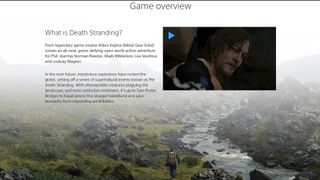
Let’s start with most-literal interpretation of the plot, as explained by the official Death Stranding pre-order page. This isn’t so much a theory but more of a constant or True North that can we use to interrogate the various plot theories to see how they interlock with ‘the truth’ – although it’s quite possible that the official product description contains slight misdirection with respect to the plot itself.
Journey Between Life and Death
Begin your quest to save civilisation in a broken world rife with supernatural dangers.
Sign up to the 12DOVE Newsletter
Weekly digests, tales from the communities you love, and more
From legendary game creator Hideo Kojima (Metal Gear Solid) comes an all-new, genre-defying open world action adventure for PS4, starring Norman Reedus, Mads Mikkelsen, Léa Seydoux and Lindsay Wagner.
In the near future, mysterious explosions have rocked the globe, setting off a series of supernatural events known as the Death Stranding. With otherworldly creatures plaguing the landscape, and mass extinction imminent, it’s up to Sam Porter Bridges to travel across the ravaged wasteland and save humanity from impending annihilation.
Face unique challenges
Arm yourself and take aim at a variety of objectives in your mission to reunite a broken nation, while balancing under the weight of your cargo as you travel. Protect your supplies from wild bandits, and stay safe from the terrifying Beached Things… or face failing those who depend on you.
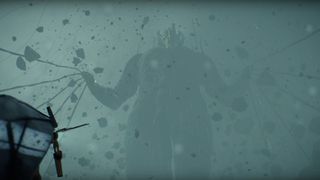
This was compiled seven months ago before the new trailer, but this plot theory by Reddit user uranicsilver has held up remarkably well, although it makes some assumptive leaps about black holes and travel to multiple dimensions.
Explore the world
The Decima Engine renders a hyper-realistic landscape utterly transformed by the Death Stranding. Unpassable obstacles block your path and force you to find different routes, while supernatural elements alter the physical state of your surroundings.
Death is not the end
There is no traditional ‘game over’ state in Death Stranding. Lose your life during combat and you’ll find yourself in an upside-down realm, searching for a way back to the living. Choose your combat methods carefully, as killing your foe is almost never the solution – and every death carries a consequence.
Assist other players
Help other travellers without ever crossing paths via asynchronous online gameplay. Send supplies, share safe houses and walk in the footsteps of fellow couriers to reunite civilisation.
The Extinction Event and Big Bang Theory

In the third Death Stranding trailer, revealed at the The Game Awards 2017, there is repeated reference to ‘big bangs’ throughout history, leading up to the fourth big bang which sounds like the Death Stranding event. It can be interpreted as a brief summary of human evolution: Big Bang one: The creation of the Universe. Big Bang two: The creation of a planet (let’s assume it’s Earth). Big bang three: The creation of life as we know it (let’s assume humankind). Big Bang four: It’s harder to interpret whether this is a creation, or a destruction event – or both – but it is being relayed as being the final big evolution event for the species in question.
Once there was an explosion. A bang that created time and space."
Once there was an explosion. A bang that sent a planet spinning in that space."
"Once there was an explosion. A bang which gave rise to life as we know it."
"And then came the next explosion... An explosion that'll be our last."
What is the fourth big bang? It’s almost certainly linked to the ‘Death Stranding event’. This element has been deliberately omitted from the trailers so far, but has changed the parameters for our – or perhaps another – species, since the assumption that Norman Reedus is a human, in our version of the Earth, isn’t so clear cut. More on that later. What change might be so seismic? This might sound like speculation, but the evidence stacks up: what if mankind has somehow ‘killed’ death, so the concept of dying no longer exists. This would, in the purest sense, be death stranding. Stranding meaning ‘run aground’, and is used to to describe the phenomenon when marine life, such as a whale, gets trapped on a beach. The mammal is either dead, injured, or unable to move due to absence of water.
In popular science-fiction, scientists have ‘stranded’ death by inventing cures for cancer (like Resident Evil) leaving to the creation of zombies, who are arguably neither alive or dead. This doesn’t seem to be the route that Death Stranding is pursuing, although there are hints that its protagonists might have motives to reverse death. For example, to save the president Bridget who appears to be dying of cancer. Or to right the wrongs of history, as evidenced in Death Stranding’s depictions of WWI and the Vietnam war – which appears to be linked to Mads’ character Cliff. Perhaps most pertinently, there’s a hint that Reedus’ character has suffered a tragic loss, hinted at in the picture of him, stood with a youthful version of the president (Lindsay Wagner) and a woman, we presume, is his – pregnant – wife. The wife’s face is, conveniently, blurred, and there’s an obvious temptation to link this (unborn or otherwise) baby to the Bridge Baby in the yellow canister. This baby appeared in all the early trailers, and Kojima later confirmed this wasn’t multiple babies, but the same baby, hinting at a higher significance – and that the baby had an (unrevealed) name.
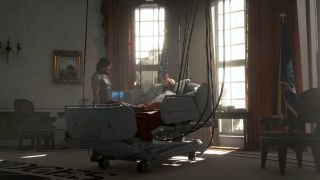
"Death Stranding is all about breaking down boundaries and encouraging its ‘players’ to connect"
How else might humanity ‘strand’ death? One path might be through the perfection of transhumanism i.e. transferring our consciousness into the digital realm, as explored in Dr Who writer Russell T Davies BBC sci-fi series Years and Years. We’ll dig deeper into this theory in a moment, as the concept of physical death seems moot for a digital being – this side of an EMP blast or a hardware failure. Another path might be a breakdown of time as we know it, with people able to slide back and forth between timelines, or between parallel universes. This has some scientific grounding, but is beyond the station of this article. Let’s just say, the inclusion of the Dirac equation and Shwarzchild Radius on Reedus’ necklace is no mistake, hinting at black holes and theories of relativity.
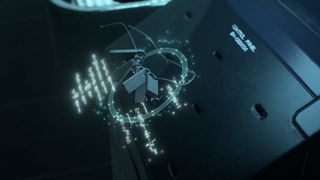
Once thing it does feel safe to assume, is that Death Stranding will address issues of evolution. Right at the start of the project, back in late 2015, Kojima spent a lot of time tweeting pictures from natural history museums (including an image referencing ‘Homo Naledi’), and was also talking about his love of Stanley Kubrick’s 2001, his favourite sci-fi movie. It’s likely no accident that 2001’s cosmic baby bares cosmetic comparison to the Bridge Baby, or that astronaut ‘Dave’ Bowman’s red suit is similar to Reedus’ Bridges outfit. In fact, a deep orange (almost red) version of this suit can be glimpsed in the new Death Stranding trailer. Again, it could be a cosmetic nod, but the evolutionary theme feels to big to ignore.
The virtual reality / video game theory
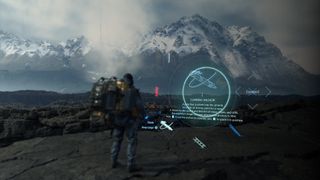
This is really an extension of the transhumanism theory posited above. What if mankind has evolved to a post-human stage, where all engagement is digital, like a form of The Matrix? Who - or what - defines the rules of the universe? Who are the new gods? The terrorists? The true believers? These are absurdly complex questions, but you can easily draw links to Death Stranding. Note the video game style handcuffs, which shift from blue to red to indicate its wearer’s health. Troy Baker’s Higgs (a nod to the Higgs Boson particle?), makes a reference to the fact that ‘we can always change the rules’ when he uses his golden mask to conjure the oily beast.
“Sam Porter Bridges - the man who delivers" is how Lea Seydoux’s character Fragile greets Norman Reedus’ protagonist. Why would he defined by ‘functional class’, much as we do in video-game character selection screens? Die-Hardman. Heartman. Deadman. Mama. Why do all the Death Stranding characters have such stupid names… almost like avatars? I mean, Hideo Kojima called some MGS characters Hot Coldman and Fatman, but it is odd.
Why do Mads Mikkelsen’s goggles just melt away in the second trailer after he’s raised them over his eyes? Why do the cables that extend from his body and allow him to control the skeleton army look so much like pad controller wires? Why do the cables then retract into his backpack? How can Sam ‘order’ objects into his world via the object rotation wheel? When Sam is fighting the yellow guys in the trailer, why does a rock behind him glimmer and glitch? Most Death Stranding theories nod to black holes and time travel, but there is a case that the universe exists in a digital context, outside normal rules. Or that the game's Bridges organisation open portals to a multitude of parallel universes, or multiverse, as our sister site space.com explains… opening a link to our physical version of the world.
All these little details could be explained away by another overarching plot device, but you need to think about Kojima’s thematic intentions with Death Stranding. At the Tribeca Film Festival, Kojima explained, "It's an open-world action game, but it's really something new," he told the audience. "There are so many things happening in the real world – in America, in Europe – everything is actually connected by the internet, but in a way we're not connected in the real world these days".
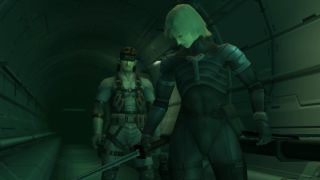
How Metal Gear Solid 2 manipulated its players, warning us of an age of Fake News, Cambridge Analytica and data surveillance
The Metal Gear series was famous for its ‘meta’, often breaking the fourth wall to speak directly to the player. Some of Metal Gear Solid 5’s audio tapes feel like metaphors for digital media / twitter, and how disinformation can spread unfiltered. Metal Gear Solid 2 was way ahead of its time in terms of predicting the growth of a digital society, fake news and the risk of malevolent actors using these systems to exert control. Death Stranding might be Kojima’s most literal comment – or system of engagement – to directly involve the game’s players in his message of ‘connection’. Sure, we’re all linked through the internet, but are we genuinely engaging and working together? Are we losing our humanity through virtual communication? Metal Gear Solid 4 uses its PMC soldiers as a comment on the ‘mindless’ fans of first-person shooter games, who submit to a system of repetitive sequels.
Kojima goes further. "I'm putting that as a metaphor in the game. The player will have to reconnect the world in the game. You're very alone, there's solitude, but you're trying to connect. The story and the gameplay, the key word is 'connection.' There are so many things in-between, of course, but the key is connection," he told the Tribeca crowd. "I also threw in a really new idea. You're connecting the game, and everyone is playing it together, and you'll be connected, everyone will be connected together as well. I can't say anything because Sony will be very unhappy. I don't want to be disconnected from Sony."
The PlayStation website describes Death Stranding's asynchronous online gameplay where players 'send supplies, share safe houses and walk in the footsteps of fellow couriers'. It sounds a lot like Dark Souls, where your single player experience is impacted by other human players. Albeit a world where players leave a direct - and perhaps - literal footprint, marking out safe routes past the BTs (Beached Things aka the oily ghosts). You can take this further: what if killing your opponents creates more BTs to avoid? Or the game's emphasis on equipment weight and portability is related to your option to leave items behind for others to find, where you make trade offs between selfish utility and benevolence? Once again, this isn't without precedent. MGS5 contained a base-building FOB meta-game, where building nuclear weapons helped protect your HQ from online invasion by other players… but if all players opted to disarm their nukes, then the game unlocked a secret celebration cut-scene.
Still not buying it? Read on.
The ‘We are the Death Stranding’ theory
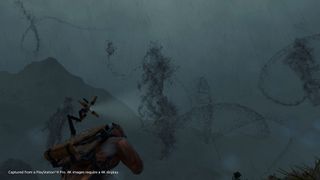
If Death Stranding’s universe is a form of digital creation, or video game, then what if destructive external influence disturbing the equilibrium is… us? The player. The oily hands reaching to grab hold of Reedus and the others are our attempts to seek a new player to use (and abuse) in a game simulation. If Death Stranding’s world was literally a video game, what happens when we’re no longer there to observe it? The idea is a bit Wreck-It-Ralph, but the idea that our actions directly impact a digital universe is a fantastic metaphor to reconnect us to the real world. In real life, humanity has been disassociated from consequence, which feels potentially dangerous in these turbulent political times, or given the warnings of global warming and environmental ruin. By making us destructive – if not malevolent – agents in a virtual realm, Kojima reinforces our duty of care to reality. A virtual connection becomes an actual connection. Two strangers randomly discussing Death Stranding plot theories on a message board become real life friends.
You can imagine Sam Porter Bridges role being to clean up bodies from a virtual battlefield so it refreshed for the virtual player, or perhaps to remove those bodies, so that they might not be possessed and used as playthings in Death Stranding’s flipped world, which seems to be obsessed with violence, hence the scenes of WWI. The oily hands are us grasping at a player select screen, or waiting in an online lobby for connection. The latest trailer flips between scenes using a first-person blink, which is implied to be the baby’s perspective. What if we, the player, see and interact with Death Stranding’s world(s) via the baby, who is our bridge – and theirs – between worlds? This theory is obviously a BIG leap of faith, and better explained by this fabulous video from YouTuber RagnarRox, called the Death Stranding Evolution Event.
The time-travel and parallel universe theory
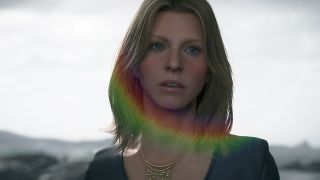
As discussed earlier on, another huge evolution event or way to ‘strand’ death might be the discovery of time travel, or a related breakthrough allowing humanity to travel across parallel universes. At the crudest level, this would explain the teleportation of objects, and Death Stranding’s dual-universe, where the worlds of the living and the dead seem to be brushing up against each other; if not completely enmeshing. This idea has providence in the game, with the references to chirality. There’s a far better investigation of chirality on YouTuber and MGS analyst YongYea’s channel. Chirality is common in chemistry, where a chiral molecule can’t be superimposed perfectly on its mirror image. Think of it like your hands. You can’t perfectly overlay your right hand over your left, although they share similar properties. However – and this feels really significant for Death Stranding – chiral entities can ‘shake hands’ by facing opposite each other e.g. two people facing each other shaking their right hands.

Looking for something new to play while you wait for Death Stranding? Here's our list of the best new games of 2019.
The latest Death Stranding trailer seems to show multiple examples of its characters directly facing against each other: Sam and Amelie / Bridget. Sam and Fragile. Now think about that in the context of a phrase from the E3 2018 trailer: "Give me your hand in life. Give me your hand in death." Can Life and death shake hands when facing each other? As we know from the official game description, you must ‘journey between life and death’ and will ‘find yourself in an upside-down realm, searching for a way back to the living’. During the latest trailer, it looks like Sam (presumably alive) is able to communicate with the young Lindsay Wagner (who we assume is dead). This feels fairly certain given the scenes of Wagner's character looking frail, presumably fighting cancer; and we later a bandaged corpse being incinerated, with the same headband Wagner was wearing by its side.
What happens to allow humanity to access alternate dimensions or parallel realities? This is the million dollar question, but seems linked to Mads Mikkelsen and the mysterious Bridge Baby. Mads is seen in a smart suit, in what looks like a scientific facility, telling the baby “The whole wide world will be yours to explore. You’ll be able to go wherever you want. Even the moon”. Chronologically, it looks like the start of the trailer - where a bloodied Mads is talking, almost apologetically, to the baby (“Don’t worry, it’s OK, I’ll always be with you”) – occurs after his hopeful promise of the baby being able to travel anywhere. What went wrong? Is the baby the device that allows people to travel between dimensions and worlds? Or has another, bigger, event occurred, yet to be seen in the trailers, to which the baby was a solution?
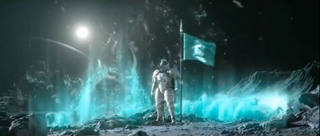
"There’s a theory that Death Stranding is a glorified evolution story for the Kojima Productions mascot, Ludens"
There’s a theory that Death Stranding is a glorified evolution story for the Kojima Productions mascot, Ludens… and it’s definitely weird that the mascot had its own unveiling video starring whales (a recurring motif from MGS5 and during Death Stranding), set on – of course – the moon. Not a moon. The moon. Since some fans mapped the telemetry of the background to the earth and sun. A close up image of the Ludens mascot suggest the human underneath has wrinkled eyes very similar to Norman Reedus, and we see his character accrue equipment (and levelling up) during the trailers. One theory is that Reedus evolves to become a Ludens, like the five floating figures we see at the end of the first trailer. This wormhole goes a lot deeper, and we’d suggest reading up on sci-fi novel The Time Wanderers and our deeper look at the history of Death Stranding (notably page two onwards).
The chronology of Hideo Kojima’s trailers are always deliberately fractured, and it might be that Reedus / Sam's activities as an astronaut or explorer lead to contact with an alien race - like the Ludens - or a version of ourselves from the future or past. Like all Kojima’s games, we’re inundated with clues and fragments - sometimes from highly critical scenes – but lack the lens or context to understand them, since he withholds the bigger picture.
If this all makes no sense, then that might be entirely the point. Death Stranding's mysterious plot isn't currently designed to be solved, with clues pointing in a number of plausible directions. Quite possibly, the act of playing the game, and genuinely collaborating and forming 'connections' with other players is how the bigger mystery will finally reveal itself… much how players congregated on forums and social media to solve the final puzzle in Kojima's horror curio PT, but in a more formal manner.
We’ll be updating this article as time goes on, so join us next week for more Death Stranding theories, including our thoughts on: The Horizon Zero Dawn shared universe theory, the Silent Hills / Purgatory theory, and a wider investigation of Kojima’s thematic intentions with Death Stranding.
FGS Content Director. Former 12DOVE EIC, GTAVoclock host, and PSM3 editor; with - *counts on fingers and toes* - 20 years editorial experience. Loves: spreadsheets, Hideo Kojima and GTA.

